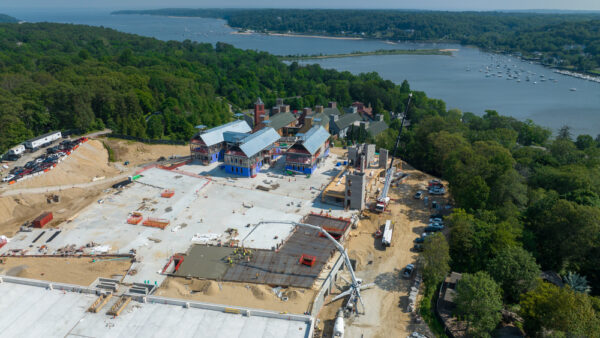The French government’s bold plan to pave 1,000km of highways with photovoltaic panels over five years seems unlikely to go ahead following the failure of a trial “solar road” in Normandy.
The panels deteriorated quickly and failed to generate the amount of electricity hoped for.
The kilometre-long test road was opened by former French environment minister Ségolène Royal near the small town of Tourouvre-au-Perche in the Orne on 22 December 2016. Now the road’s 2,800 sq m of solar panels have degraded, peeled away and splintered, and 100m of them have been removed after being declared too damaged to repair. Â
Le Monde reports that the solar panels were unable to withstand the wear and tear caused by tractors and thunderstorms, became covered by leaf mould, and created too much noise for local residents, which meant that the speed limit had to be reduced to 70 km/h.
In the first year, when the panels were relatively intact, they generated about half of the expected yield, amounting to 150,000kWh during the year. This fell to 78,000 in 2018 and 38,000 since January, according to figures from BDVP, the French association for the promotion of solar energy.
A statement by the Orne council said the money made from the sale of the electricity was expected to be €10,500 a year, but in 2017 it received €4,550, in 2018, €3,100, and for the first quarter of €1,450.
Marc Jedliczka, vice president of the Network for Energy Transition, commented: “The technical and economic elements of the project were not sufficiently understood. It is a total absurdity to innovate at the expense of solutions that already exist and are much more profitable, such as photovoltaics on roofs.”
The €5m project was funded by the Ministry of the Environment and developed by Wattway, a company set up by Colas, the road subsidiary of contractor Bouygues. The panels used were developed by Wattway over five years. They rely on a 7mm film of polycrystalline silicon that, it was thought, would be resistant to the passage of heavy goods vehicles and offered sufficient traction to prevent skids.
According to France’s Agency of Environment and Energy Management, just 4m of solarised road would be enough to supply one household’s electricity needs, apart from heating, and one kilometre would light a settlement with 5,000 inhabitants. This led to calculations that the 1,000km of solar pavements could furnish 5 million people with electricity, or about 8% of the French population.
This grand projet seems to be over. Etienne Gaudin, the chief executive of Wattway, told Le Monde: “The Tourouvre model is not the one that we are going to market. Our system is not mature on long distance traffic … We are now focusing on small modules of 3, 6 or 9 sq m, enough to provide enough electricity for a CCTV camera, bus shelter lighting or an electric bicycle charging station. The price of the kWh is five to six times more expensive than the conventional panel, but glueing them to the ground at least solves the problem of theft.”
Wattway has some 45 solar road projects under way around the world, half of which are in France, but they are smaller scale experiments than the one at Tourouvre.
Image: Ségolène Royal was an enthusiastic backer of the Wattway plan (Government of the Orne)
Further reading:
Comments
Comments are closed.







Solar Panel paved roads always seemed a bit of a reach to me. A more reasonable idea would be selective roofing of major streets and highways with solar panels that would produce power, reduce road weather damage, lower local surface temperatures and reduce travel time uncertainty. Since many covered roadways already exist and many solar roofs have been installed, modelling this would be far easier than solar paved highways. Extending this concept to railways is simple.
Recognizing that experiments always have the potential to fail, they also hopefully provide the learning coefficients for future success.
That this team and this country is willing and capable of progressing such opportunities towards those goals, I look at this ambition as forward-thinking experiments in future opportunities, and must give these organisations the respectful credit for taking such bold steps towards that end.
Impressive even in temporary setback.
We put PVs on roofs for a reason – it receives direct sunlight, it’s on the buildings we want to power, and we don’t have trucks driving over our roofs. There is not and has never been a compelling case for putting PV *under* cars, and the engineering solutions to this problem are fun, but totally pointless.
The basic concept is flawed for several reasons and should never had been attempted. First, the loss of solar gain due to the inefficient angle of the sun relative to the panels in countries other than those near the equator. Add to that the inevitable and progressive degradation of the panel’s transparency caused by road dirt and debris being left onto, and then ground into, the panels. Finally the non-static (dynamic) load placed on the panels, and to the large inter-panel conductors, by large and medium size vehicles is a tremendous amount of incessant impacts to what is at its heart a delicate glass surface. Maybe someday in the distant future a panel could be created that would resolve the issue of dynamic load, possible the issue of loss of transparency, but could never resolve the issue of the inefficient sun angle. In the mean time the better approach placing time tested panels along the side of the road or upon adjacent fields at an appropriate angle for the latitude of the location involved. This would eliminate all of the three issues detailed above.